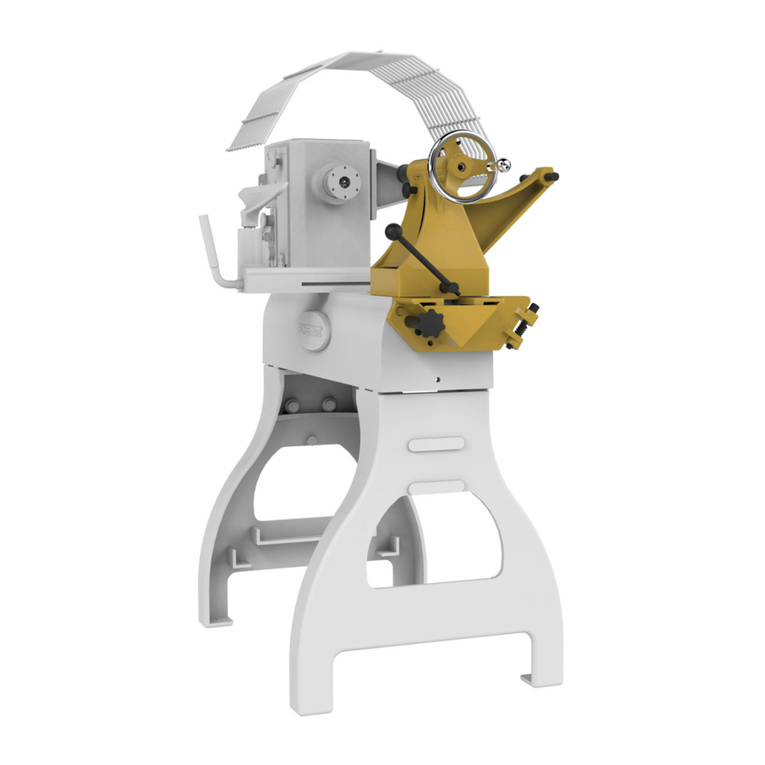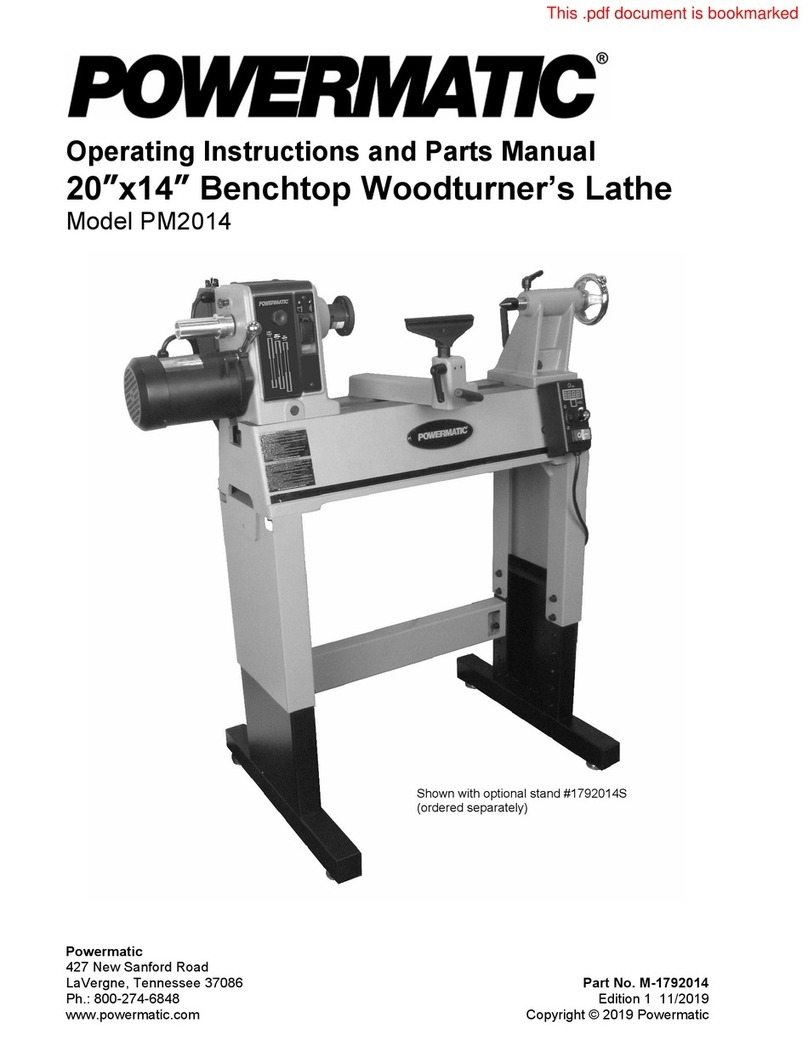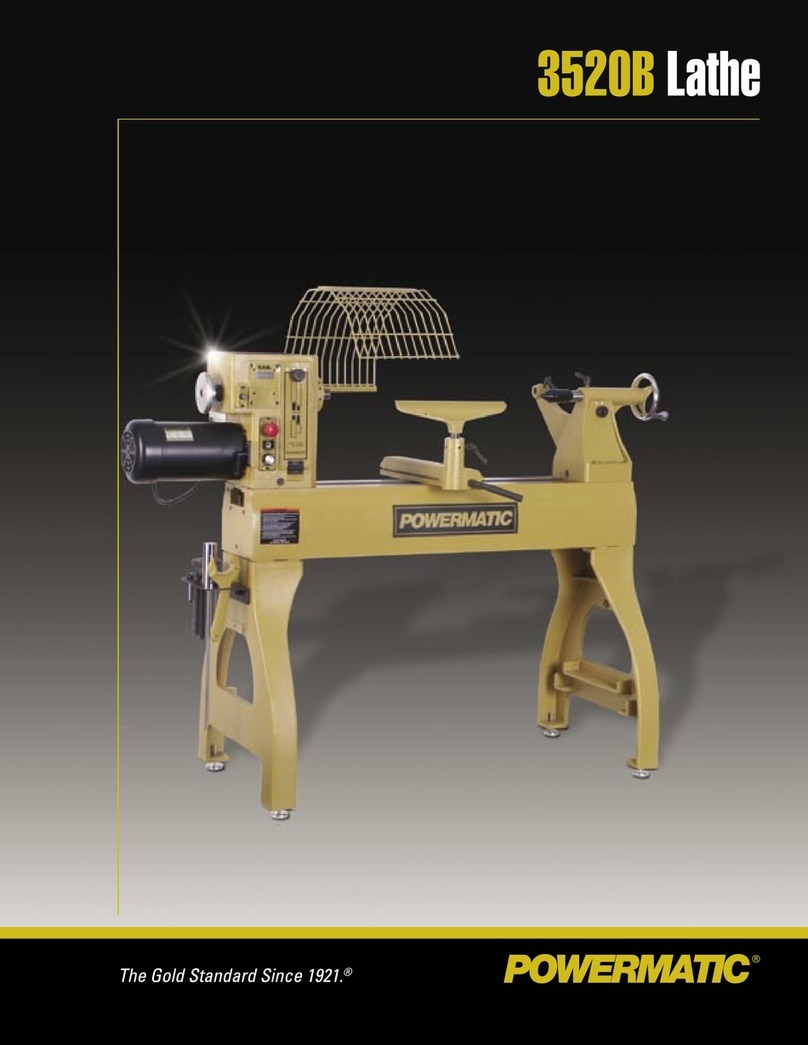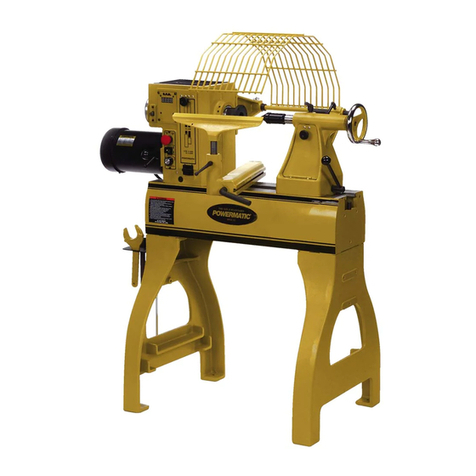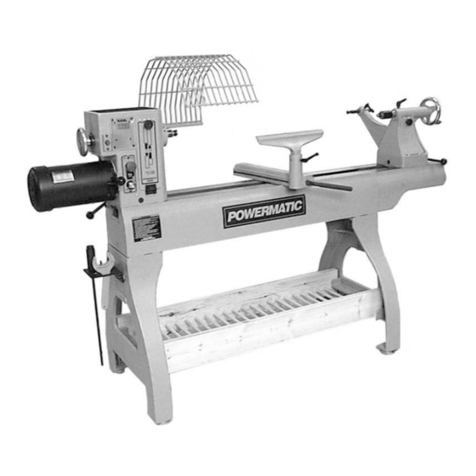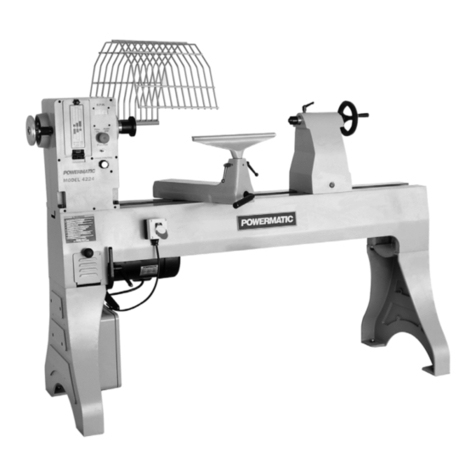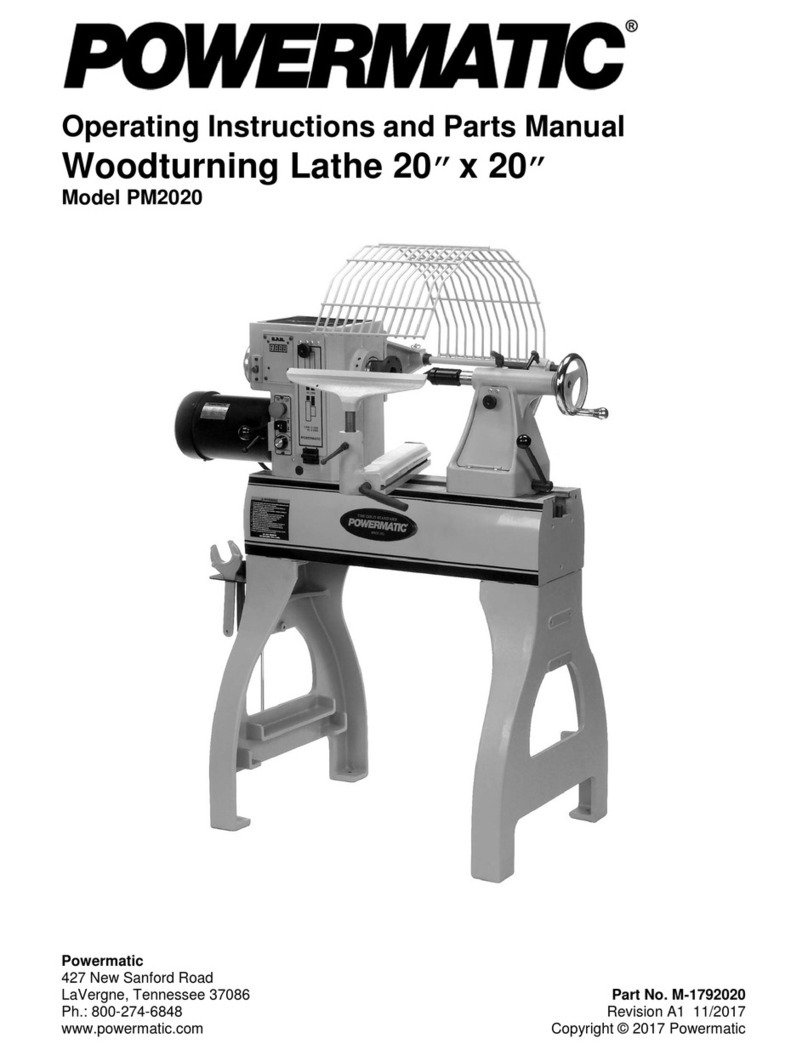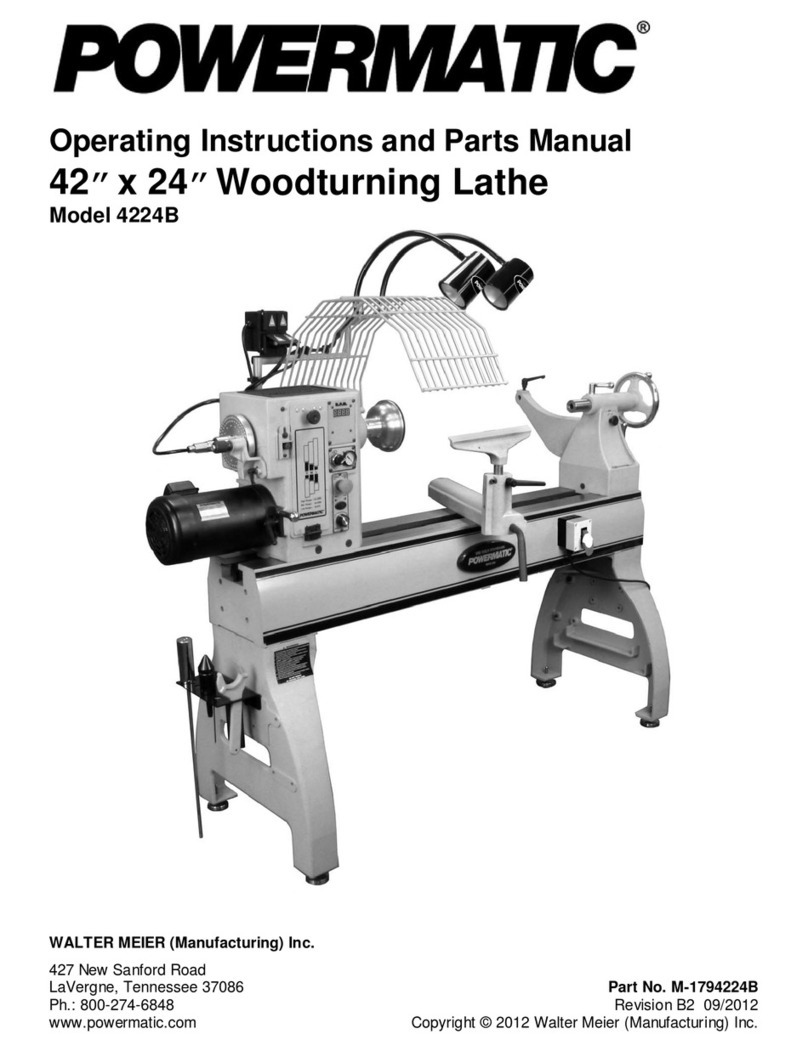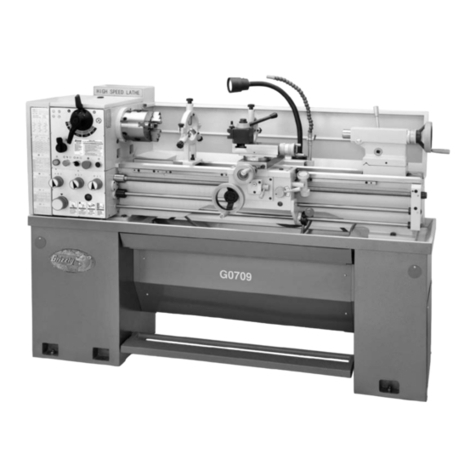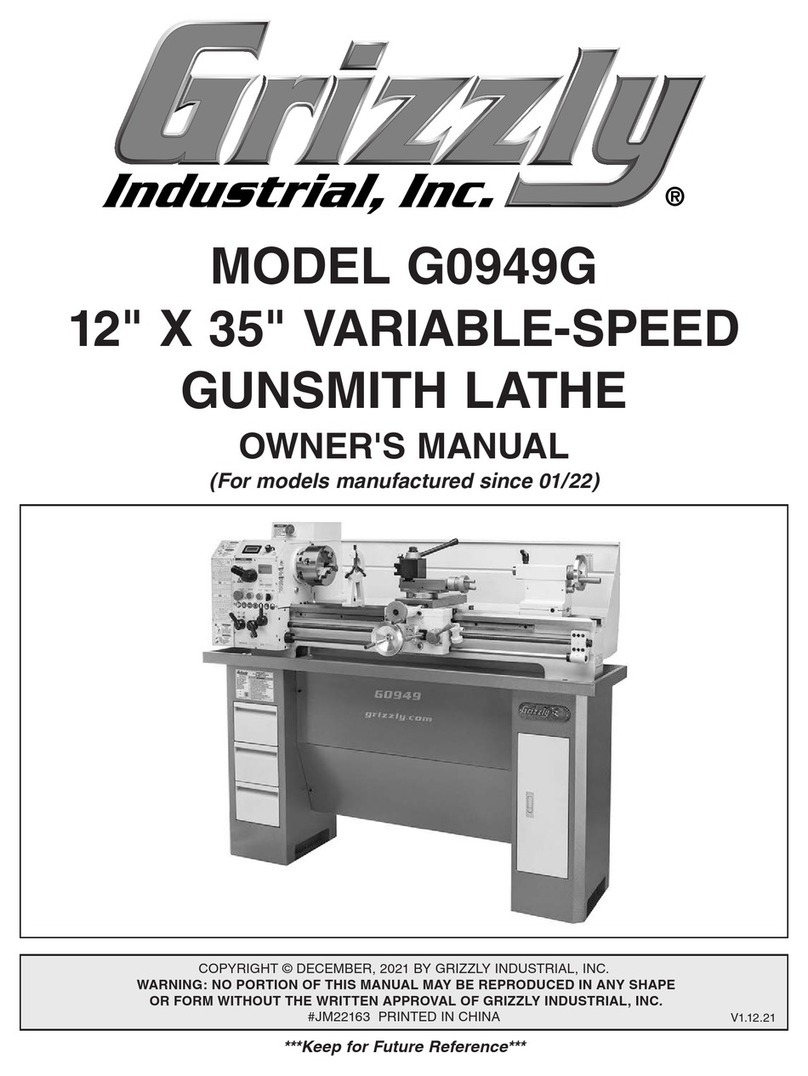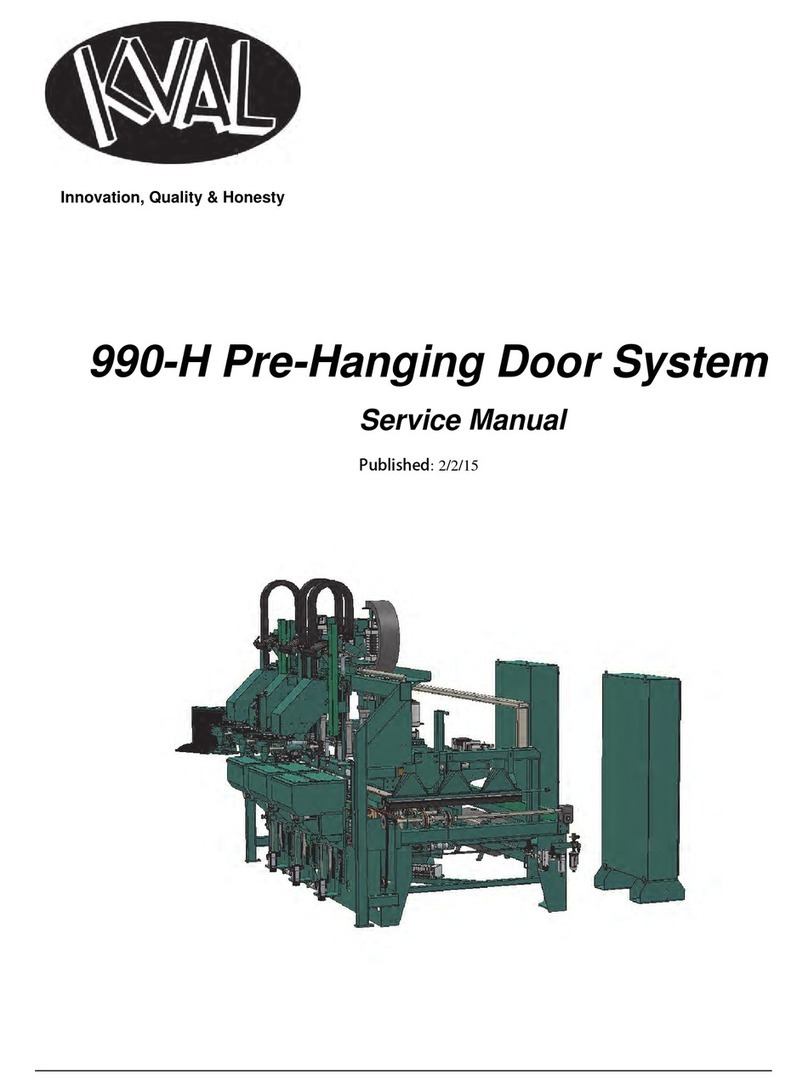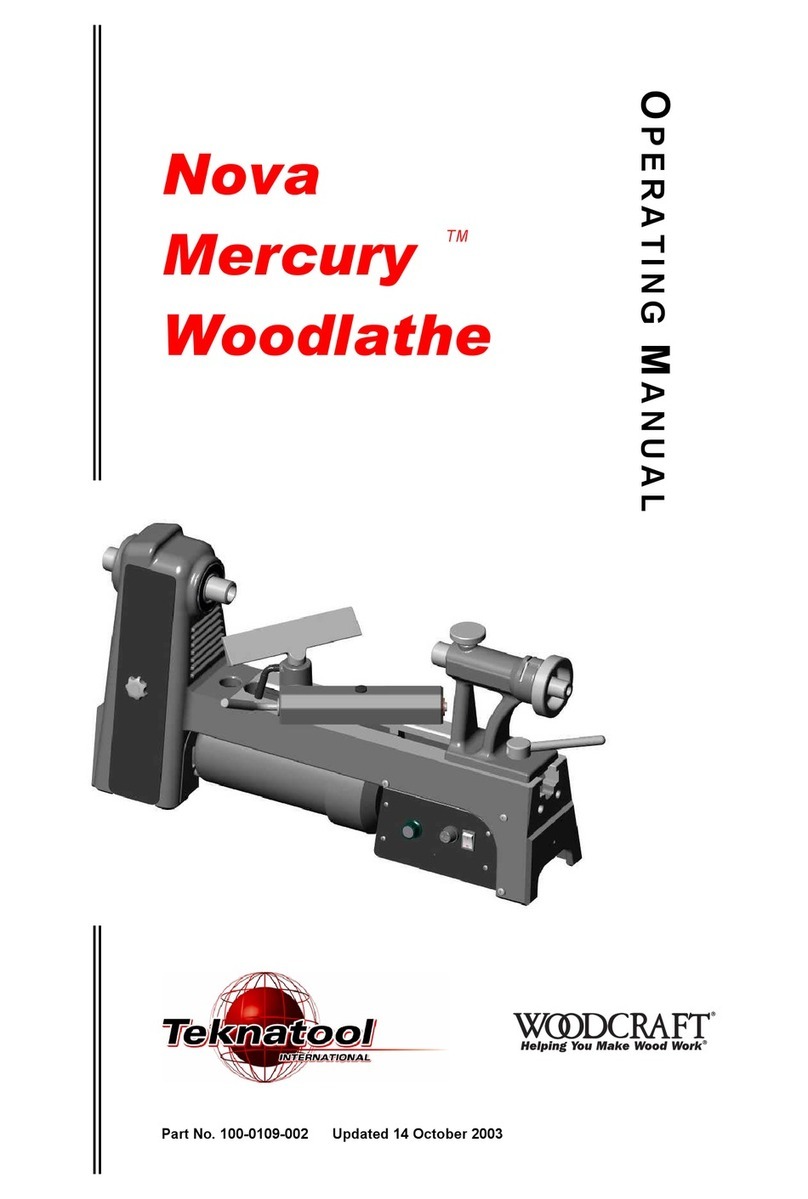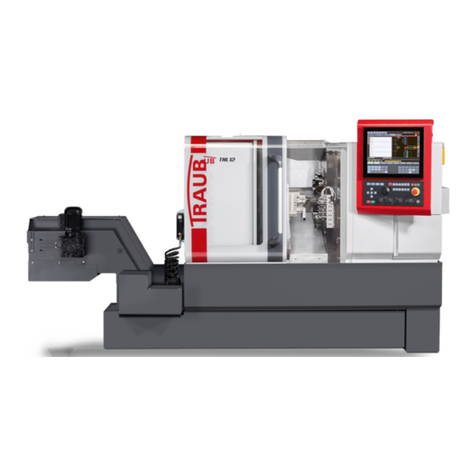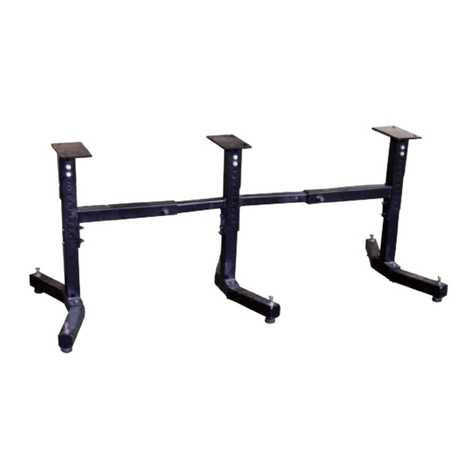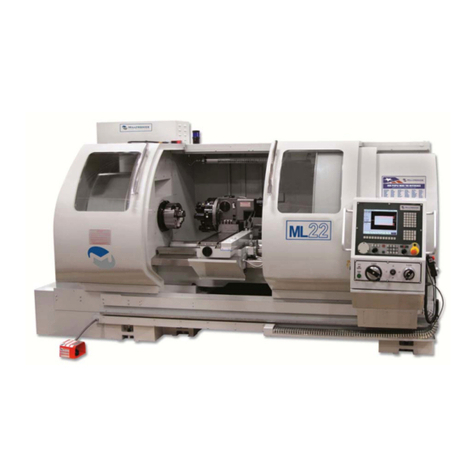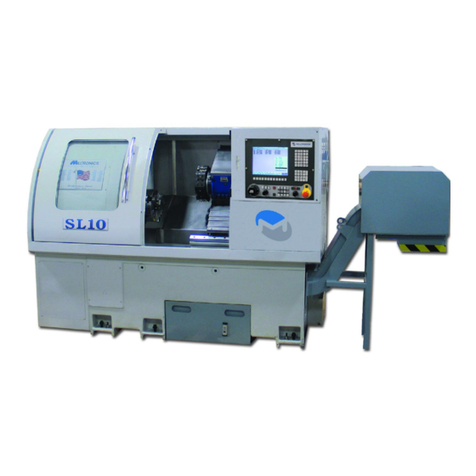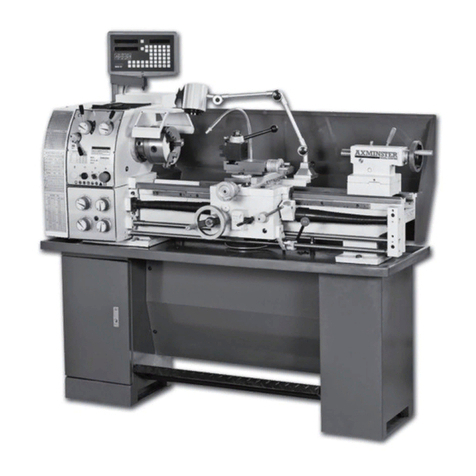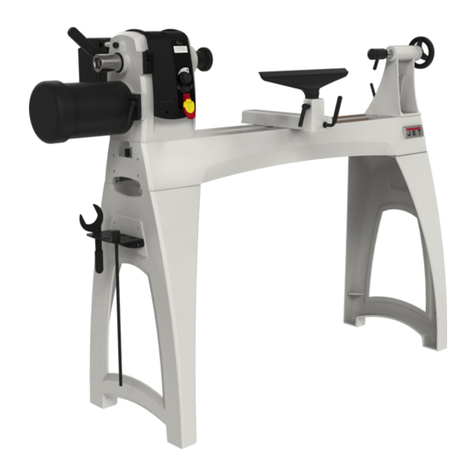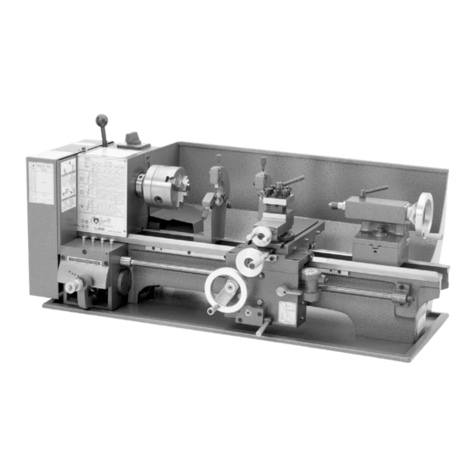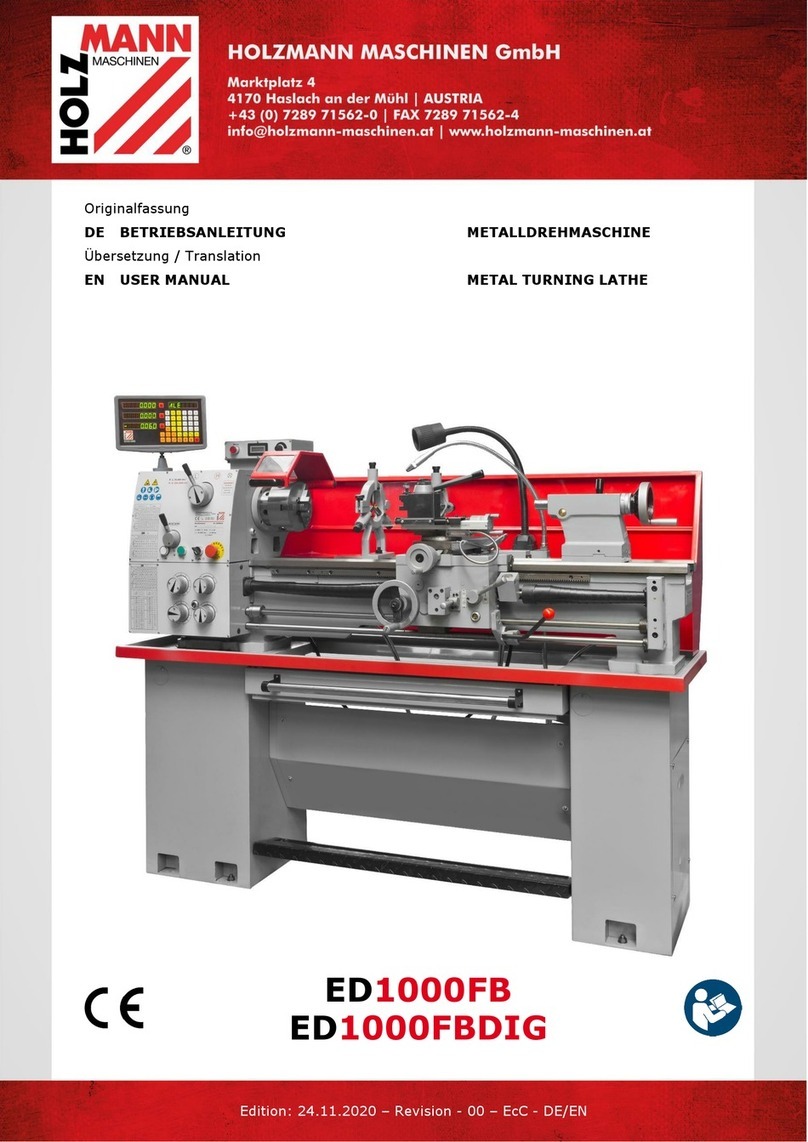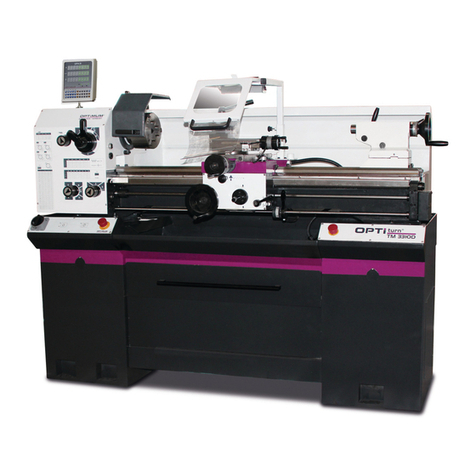
with its hazards.
The required minimum age must be observed.
The machine must only be used in a technically perfect
condition.
When working on the machine, all safety mechanisms and
covers must be mounted.
In addition to the safety requirements contained in these
operating instructions and your country’s applicable
regulations, you should observe the generally recognized
technical rules concerning the operation of woodworking
machines.
Any other use exceeds authorization.
In the event of unauthorized use of the machine, the
manufacturer renounces all liability and the responsibility
is transferred exclusively to the operator
3.2 General safety notes
Woodworking machines can be dangerous if not used
properly. Therefore the appropriate general technical rules
as well as the following notes must be observed.
Read and understand the entire instruction manual before
attempting assembly or operation.
Keep this operating instruction close by the machine,
protected from dirt and humidity, and pass it over to the
new owner if you part with the tool.
No changes to the machine may be made.
Daily inspect the function and existence of the safety
appliances before you start the machine.
Do not attempt operation in this case, protect the machine
by unplugging the mains cable.
Before operating the machine, remove tie, rings, watches,
other jewellery, and roll up sleeves above the elbows.
Remove all loose clothing and confine long hair.
Wear safety shoes; never wear leisure shoes or sandals.
Always wear the approved working outfit:
- safety goggles
- ear protection
- dust protection
Do not wear gloves while operating this machine.
Install the machine so that there is sufficient space for safe
operation and workpiece handling.
Keep work area well lighted.
The machine is designed to operate in closed rooms and
must be placed stable on firm and levelled table surface.
Make sure that the power cord does not impede work and
cause people to trip.
Keep the floor around the machine clean and free of scrap
material, oil and grease.
Stay alert, give your work undivided attention.
Use common sense. Do not operate the machine when
you are tired.
Do not operate the machine under the influence of drugs,
alcohol or any medication. Be aware that medication can
change your behaviour.
Keep an ergonomic body position.
Maintain a balanced stance at all times.
Never reach into the machine while it is operating or
running down.
Keep children and visitors a safe distance from the work
area.
Never leave a running machine unattended. Before you
leave the workplace switch off the machine.
Do not operate the electric tool near inflammable liquids or
gases.
Observe the fire fighting and fire alert options, for example
the fire extinguisher operation and place.
Do not use the machine in a dump environment and do not
expose it to rain.
Wood dust is explosive and can also represent a risk to
health.
Dust form some tropical woods in particular, and from
hardwoods like beach and oak, is classified as a
carcinogenic substance.
Always use a suitable dust collection device
Before machining, remove any nails and other foreign
bodies from the workpiece.
Make sure to guide and hold the chisel with both hands
safe and tight during machining.
Work only with well sharpened tools.
Machine only stock which is chucked securely on the
machine, always check before switching the machine on.
Provide workpieces with centre holes before clamping
between centres.
Work large and unbalanced workpieces at low spindle
speed only.
When sanding, remove the tool rest from the machine.
